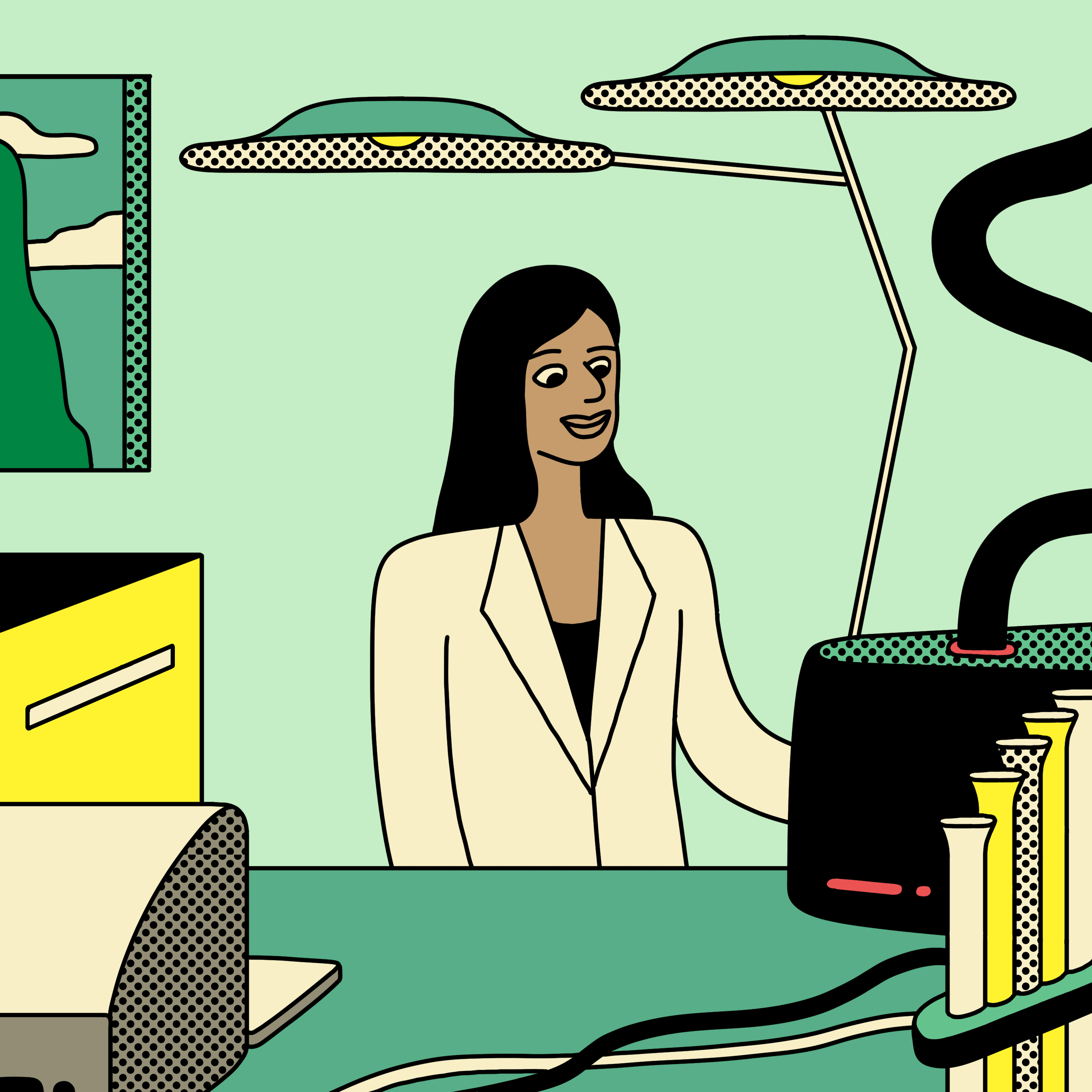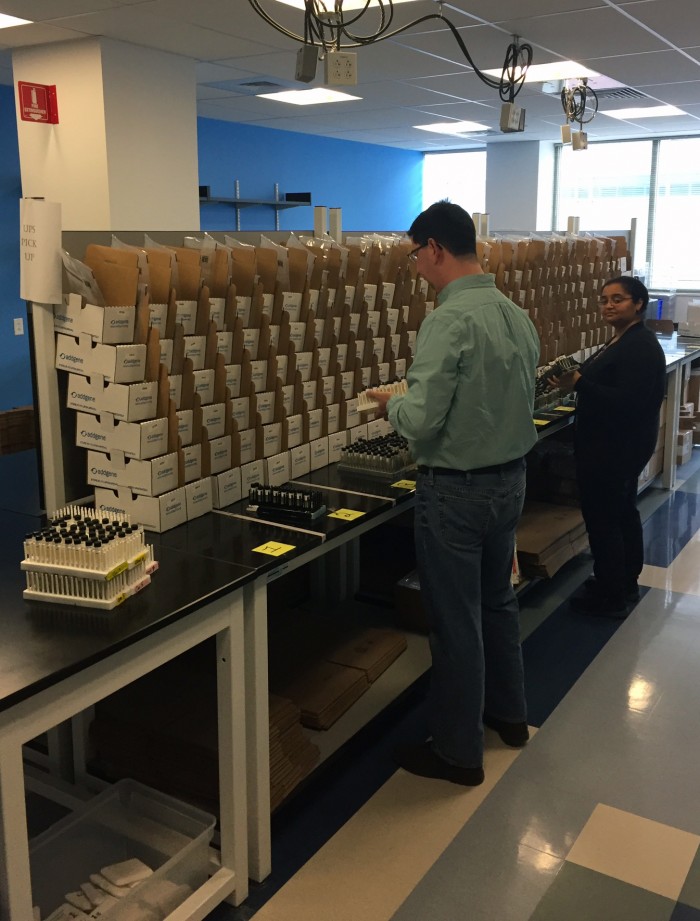The Scientific Swap Meet Behind the Gene-Editing Boom
The gene-editing technology called CRISPR is probably the fastest-spreading technology in the history of biology.
Here’s one reason why: each weekday at 8 a.m. at the offices of AddGene in Cambridge, Massachusetts, interns start loading UPS packages containing the raw DNA material needed for gene-editing, sending it as far away as Zimbabwe and Croatia.
AddGene is a nonprofit that exists to help scientists share their DNA inventions. Think of it as an Amazon.com for biological parts. Anyone can submit one—or order someone else’s part for $65.
Easy access to gene-editing technology is what has allowed labs everywhere to get into the game. Last year, there were more than 1,300 scientific papers on CRISPR, and it’s been used to do everything from curing muscular dystrophy in mice to making super-muscled beagles.
And remember those Chinese scientists who set off an ethical firestorm by editing human embryos? They got their ingredients by mail order from AddGene, too.
AddGene was started in 2004 by a graduate student, Melina Fan, who got tired of trying to beg and barter for key materials she needed. Why not create a central repository to which everyone can contribute?

“Sharing is something that people don’t talk about enough,” says Patrick Hsu, a biologist at the Salk Institute. “It dramatically sped up CRISPR adoption. In a way, AddGene shows you why it’s worth fighting over. It’s in everyone’s hands and changing everything.”
To be sure, there’s a nasty patent battle playing out over who controls the commercial rights to CRISPR. But that doesn’t affect sharing between labs, since patents don’t directly restrict what basic scientists can do.
Faster sharing is part of an open science movement changing biology. Instead of keeping results under wraps for a year waiting for a big Nature paper, biologists have started to follow the lead of physicists, who are popping papers onto “pre-print” servers so everyone can have a look and offer feedback.
Here’s how it works: the language of DNA is a code, but it’s physical. It’s made up of strings of chemical bases labelled A, G, C, and T. To ship it, AddGene mails out vials of E. coli bacteria with the valuable bits of DNA spliced into mini-chromosomes, known as plasmids.
There are about 45,000 plasmids to choose from. Want to make a mouse’s brain cells react to light? That’s plasmid number 20298, deposited by Karl Deisseroth, the famed co-inventor of optogenetics at Stanford. Need to turn off every gene in a fruit fly, one by one? That’s number 64750.

The most frequently ordered DNA of all the code is to make Cas9, the editing protein used in CRISPR. Since 2013, the ingredients for CRISPR have been sent out more than 60,000 times, says Joanne Kamens, AddGene’s executive director. Once a lab has bacteria harboring the gene, it can make more. It’s a renewable resource.
Hsu, who is currently setting up his lab in California, had just ordered 10 plasmids the day I spoke to him. He typed in his name and telephone number and hit “purchase.” AddGene made such exchanges easier by putting in place cookie-cutter legal agreements. For research centers like Salk that sign on, ordering genetic material from another university is a one-click affair rather than a trip to the legal department. “The ingenious part was to get the paperwork out of the way,” says Hsu.
The sharing of these genetic gadgets doesn’t extend to companies, since universities still hope to charge them. Hsu says that when he worked at gene-editing startup Editas Medicine, also in Cambridge, he couldn’t order from AddGene. Instead he had to laboriously re-create long stretches of DNA he needed. “I was synthesizing DNA with VC dollars,” he says.
The idea of synthetic biology—mixing and matching biological parts to make stuff —has led to a lot of heavy breathing in the media. “Biological Legos” we’re told, will turn life into mere “plug-and-play.” A well-known annual synthetic biology competition, iGEM, asks students to build things like flashing bacteria using defined DNA parts that come in a kit.
In reality, biology isn’t as tidy as an Ikea kit. Researchers say AddGene became biology’s de facto parts store by solving practical problems. “[It’s] for practicing scientists,” says Marcel Bruchez, a genetic engineer at Carnegie Mellon University, who submitted DNA this year so others can use a technique he created to make cells glow. “They love the chaos. They are about collecting disorder.”
If AddGene weren’t a nonprofit, it would be a decent business. It sold $8 million worth of DNA instructions last year, and banked a $2 million surplus. Kamens says it will invest the extra money to expand its efforts.
Keep Reading
Most Popular
Large language models can do jaw-dropping things. But nobody knows exactly why.
And that's a problem. Figuring it out is one of the biggest scientific puzzles of our time and a crucial step towards controlling more powerful future models.
The problem with plug-in hybrids? Their drivers.
Plug-in hybrids are often sold as a transition to EVs, but new data from Europe shows we’re still underestimating the emissions they produce.
Google DeepMind’s new generative model makes Super Mario–like games from scratch
Genie learns how to control games by watching hours and hours of video. It could help train next-gen robots too.
How scientists traced a mysterious covid case back to six toilets
When wastewater surveillance turns into a hunt for a single infected individual, the ethics get tricky.
Stay connected
Get the latest updates from
MIT Technology Review
Discover special offers, top stories, upcoming events, and more.